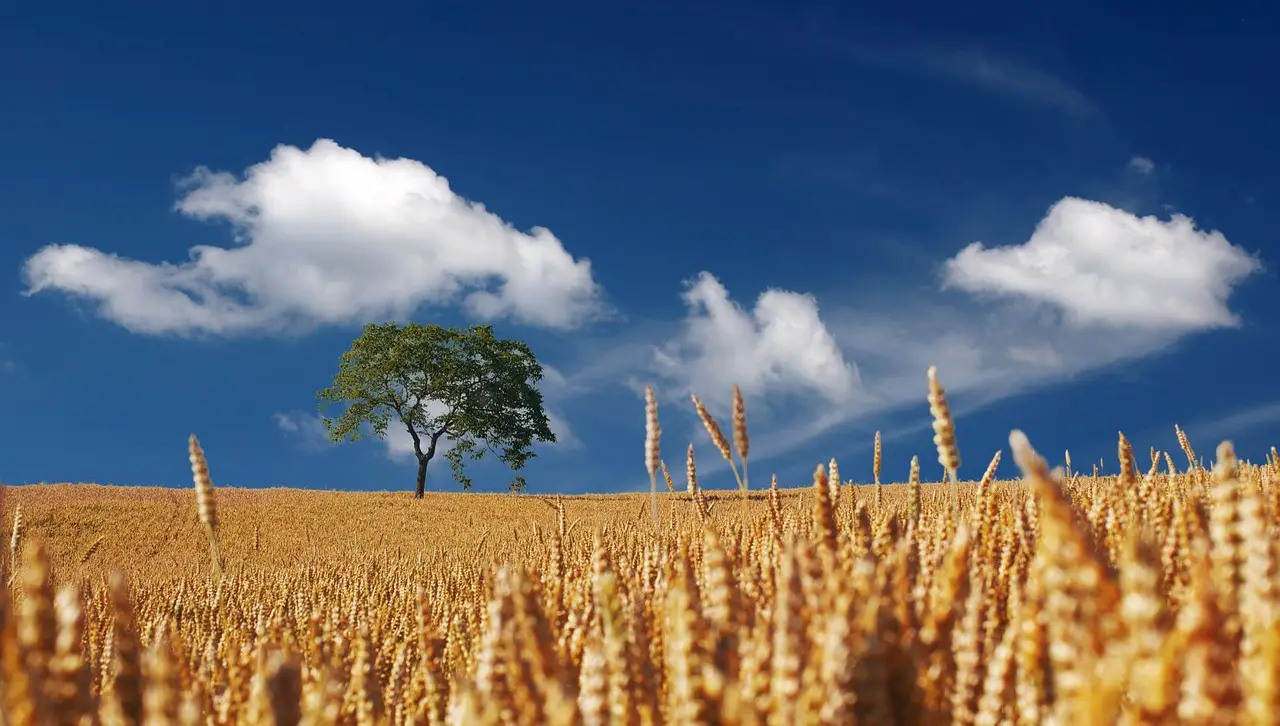To identify a mature Balsam Fir tree, look for its conical shape, flat needles that are dark green on top and silvery beneath, and distinctive cones that hang down. Mature trees can reach heights of 40 to 60 feet and have a smooth, grayish bark that becomes more scaly with age.
Understanding the Balsam Fir Tree
The Balsam Fir (Abies balsamea) is a popular tree species found primarily in North America. Known for its fragrant needles and symmetrical shape, it is commonly used as a Christmas tree and is highly valued in the timber industry. Understanding how to identify a mature Balsam Fir can enhance your appreciation for this beautiful tree and its role in the ecosystem.

Mature Balsam Firs are typically characterized by their tall, slender form and dense foliage. These trees are evergreen, meaning they retain their needles year-round. This section will guide you through the key features that distinguish mature Balsam Firs from other coniferous trees.
Physical Characteristics
The physical characteristics of a mature Balsam Fir are essential for identification. Here are the primary features to observe:
- Height and Shape: Mature Balsam Firs usually reach heights between 40 to 60 feet, with some specimens growing even taller. They exhibit a classic conical shape, which makes them easily recognizable.
- Needles: The needles of the Balsam Fir are flat, measuring about 0.5 to 1 inch long. They are dark green on the upper side and have a silvery-white underside, which gives them a unique appearance.
- Cones: The cones of a mature Balsam Fir are cylindrical and can grow up to 4 inches long. Unlike many other conifers, these cones hang down from the branches rather than standing upright.
- Bark: The bark of a young Balsam Fir is smooth and grayish-brown. As the tree matures, the bark becomes more scaly and develops fissures, adding to its distinct look.
Habitat and Growth Conditions
Mature Balsam Firs thrive in specific habitat conditions. They prefer cool, moist environments and are often found in northern forests. Here are some growth conditions that favor their development:

- Soil Type: Well-drained, acidic soils rich in organic matter are ideal for Balsam Firs. They do not tolerate compacted or overly wet soils.
- Light Requirements: While young trees can grow in partial shade, mature Balsam Firs flourish in full sunlight, allowing them to develop their characteristic shape.
- Climate: These trees prefer cooler climates with adequate rainfall. They are well adapted to regions with cold winters and moderate summers.
Ecological Importance
Mature Balsam Firs play a vital role in their ecosystems. They provide habitat for various wildlife species, including birds and small mammals. The dense foliage offers shelter from predators and harsh weather conditions.
Additionally, Balsam Firs contribute to soil health by adding organic matter through fallen needles. The needles decompose slowly, enriching the soil with nutrients over time. Their presence also helps prevent soil erosion, maintaining the stability of forest ecosystems.
Cultural Significance
The Balsam Fir holds significant cultural importance, especially in regions where it is native. Its fragrance and aesthetic appeal make it a favored choice for holiday decorations. Many families create traditions around selecting and decorating their Christmas trees, often opting for the Balsam Fir due to its lush appearance and pleasant scent.

In summary, identifying a mature Balsam Fir tree involves recognizing its unique physical characteristics, understanding its preferred habitat, and appreciating its ecological and cultural significance. With this knowledge, you can gain a deeper appreciation for this majestic tree and its contributions to both nature and human traditions.
Identifying a Mature Balsam Fir Tree: Key Features
When it comes to identifying a mature Balsam Fir tree, there are several key features that can help differentiate it from other coniferous trees. Understanding these characteristics will allow you to recognize this tree in various environments, whether you are hiking in the woods or visiting a local park. Below, we will break down the essential features to look for when identifying a mature Balsam Fir.
Leaf Characteristics
The leaves of a Balsam Fir are one of the most distinguishing features. Here’s what to look for:
- Needle Shape: The needles are flat and soft to the touch, unlike some other fir species that have stiffer needles. They are arranged in a spiral around the branch but appear to be in two flat rows.
- Needle Color: On the upper side, the needles are a rich dark green, while the underside reveals two distinct white lines. This contrast adds to their visual appeal.
- Needle Length: Mature needles typically range from 0.5 to 1 inch long. They are relatively short compared to other fir trees.
Branch Structure
The branching pattern of a mature Balsam Fir also aids in its identification:

- Horizontal Branches: The branches grow horizontally from the trunk, creating a symmetrical and even appearance. This characteristic is particularly pronounced in mature trees.
- Dense Foliage: The dense foliage contributes to the tree’s conical shape, making it visually striking, especially during the winter months when other trees may be bare.
- Branching Arrangement: The branches usually start low on the trunk and may droop slightly due to the weight of the needles, giving the tree a graceful look.
Cones and Seeds
The cones of a mature Balsam Fir are another significant feature to consider:
- Cylindrical Shape: The cones are cylindrical and can measure between 2 to 4 inches long. This shape is distinctive among conifers.
- Color: Fresh cones are typically green and turn brown as they mature. They hang down from the branches rather than standing upright, which sets them apart from many other fir species.
- Seed Dispersal: As the cones mature, they open up to release seeds, which are small and winged, allowing them to be carried by the wind over distances.
Bark Texture
The texture and appearance of the bark can provide clues about a Balsam Fir’s maturity:
- Younger Bark: In younger trees, the bark is smooth and grayish-brown, giving it a sleek appearance.
- Mature Bark: As the tree ages, the bark develops into a more scaly texture with small fissures. This change can help you estimate the age of the tree.
- Bark Color: The color can vary from gray to reddish-brown as it matures, contributing to its unique character.
Growth Rate and Lifespan
Mature Balsam Firs have specific growth rates and lifespans that can assist in identification:
- Growth Rate: Balsam Firs typically grow at a moderate rate, averaging about 1 foot per year under optimal conditions. This growth rate helps distinguish them from faster-growing species.
- Lifespan: These trees can live for several decades, with some individuals reaching up to 100 years or more. Understanding their lifespan can help in recognizing mature specimens in older forests.
- Environmental Impact: As they mature, Balsam Firs contribute significantly to their ecosystems, providing habitats and enhancing biodiversity.
Seasonal Changes
The appearance of a mature Balsam Fir changes with the seasons, which is crucial for identification throughout the year:
- Spring and Summer: During these seasons, the tree is lush and vibrant with green needles. The growth of new cones typically occurs during this time.
- Fall: In autumn, some needles may begin to drop, but the majority will remain intact, showcasing their resilience.
- winter: The conical shape of the tree becomes even more pronounced as snow accumulates on the branches, and its fragrance can be especially strong during this time.
Recognizing these key features will greatly enhance your ability to identify a mature Balsam Fir tree. Whether you are an enthusiast of nature or simply curious about your surroundings, knowing what to look for will enrich your experience in forested areas.
Comparing Balsam Fir to Other Coniferous Trees
To effectively identify a mature Balsam Fir tree, it is beneficial to compare it to other coniferous species. Many trees in North America share similar features, but subtle differences can help you distinguish the Balsam Fir from its counterparts. Below, we will explore how the Balsam Fir compares to other common conifers.
Identifying Features: Balsam Fir vs. Other Fir Trees
When comparing the Balsam Fir with other fir species, such as the Fraser Fir and the Douglas Fir, several characteristics stand out:
- Needle Arrangement:
- The Balsam Fir has flat needles arranged in a spiral around the branch.
- The Fraser Fir also has flat needles but tends to have a more pronounced white stripe on the underside.
- The Douglas Fir features soft, flexible needles that are longer and are attached individually to the branch rather than in a spiral pattern.
- Cones:
- Balsam Fir cones hang down and are cylindrical, measuring about 2 to 4 inches long.
- Fraser Fir cones are similar but slightly smaller and also hang down.
- Douglas Fir cones stand upright on branches and have distinctive “wings” on the seeds that protrude from the cone.
- Bark Texture:
- The bark of a Balsam Fir is smooth when young and becomes scaly with age.
- Fraser Fir bark is similar but tends to be more grayish in color and may not develop as many fissures.
- Douglas Fir bark is thick and deeply furrowed, giving it a rugged appearance.
Balsam Fir vs. Spruce Trees
When distinguishing Balsam Fir from spruce trees such as the Black Spruce or Norway Spruce, consider the following:
- Needles:
- Balsam Fir needles are flat and soft, while spruce needles are sharp and square in cross-section.
- Spruce needles tend to be shorter and are attached individually to the branches, giving them a more spiky appearance.
- Branching Pattern:
- Balsam Fir branches grow horizontally and have a more uniform arrangement.
- Spruce branches may grow more irregularly and have a tendency to droop under heavy needle loads.
- Cones:
- Balsam Fir cones hang down, while spruce cones hang down as well but are generally larger and have a more conical shape.
- Spruce cones often have a more elongated appearance than those of the Balsam Fir.
Balsam Fir vs. Pine Trees
Pine trees, such as Eastern White Pine or Red Pine, differ significantly from Balsam Fir:
- Needles:
- Pine needles are typically longer and can be found in clusters (fascicles), whereas Balsam Fir needles grow individually.
- Balsam Fir needles are flat, contrasting with the rounder shape of many pine needles.
- Cones:
- Pine cones are generally larger and can vary widely in size depending on the species.
- Balsam Fir cones are smaller and have a more consistent cylindrical shape.
- Bark:
- Pine bark tends to be thicker and more rugged than that of the Balsam Fir, which is smoother at a younger age.
- The coloration of pine bark often ranges from reddish-brown to gray, while Balsam Fir bark is predominantly grayish-brown.
Regional Variations
The Balsam Fir can also exhibit regional variations based on its growth environment. Understanding these variations can further aid in identification:
- Northern Populations: In colder northern regions, Balsam Firs may grow shorter and stockier due to harsher weather conditions.
- Southern Populations: In warmer climates, these trees may reach greater heights with a more slender profile.
- Soil Conditions: The nutrient availability in different soil types can affect needle color and overall health, impacting how the tree appears across various landscapes.
By comparing the Balsam Fir with other coniferous trees, you can enhance your identification skills and deepen your understanding of this remarkable species. This knowledge not only enriches your outdoor experiences but also fosters a greater appreciation for forest ecosystems.
Final Thoughts
Identifying a mature Balsam Fir tree is not only about recognizing its physical characteristics and comparing it to other coniferous species. It is also about understanding the ecological role it plays and appreciating its contribution to both the environment and human culture. As you develop your identification skills, you gain insight into the complexities of forest ecosystems and the interdependence of various species.
Ecological Importance Revisited
The Balsam Fir serves as an essential element within its ecosystem. Its dense foliage provides shelter for numerous wildlife species, including birds, small mammals, and insects. These trees create microhabitats that support biodiversity, offering food sources and nesting areas. The presence of Balsam Firs can also influence the overall health of the forest by helping to maintain soil moisture levels and preventing erosion.
Furthermore, Balsam Fir trees play a role in carbon sequestration, absorbing carbon dioxide from the atmosphere and storing it in their biomass. This function is especially crucial in mitigating climate change and maintaining ecological balance. Recognizing this environmental significance enhances our motivation to preserve these trees and their habitats.
Cultural Significance Revisited
Beyond their ecological roles, Balsam Firs hold a unique place in cultural traditions. Their popularity as Christmas trees is well-known, with families across North America gathering to select and decorate them each holiday season. This tradition connects people to nature and fosters a sense of community as they share in the experience of choosing a tree that will become part of their holiday celebrations.
The fragrant aroma of Balsam Fir needles also contributes to its desirability. Many people associate the scent with memories of family gatherings and festive cheer, making the tree not just a decoration but a symbol of warmth and tradition. The use of Balsam Fir in crafts, such as wreath-making, further highlights its cultural significance.
Conservation Considerations
As you become more familiar with identifying mature Balsam Fir trees, it is essential to consider the conservation aspects of this species. Like many trees, Balsam Firs face threats from climate change, invasive species, and habitat loss. Recognizing the signs of stress in these trees—such as needle discoloration or unusual growth patterns—can be vital for early intervention efforts aimed at preserving healthy populations.
Participating in local conservation initiatives or tree planting programs can contribute positively to the preservation of Balsam Fir habitats. Engaging with community groups focused on environmental education can also spread awareness about the importance of these trees and foster appreciation among future generations.
Practical Tips for Identification
To effectively identify a mature Balsam Fir tree in your environment, consider these practical tips:
- Visit Known Habitats: Explore areas where Balsam Firs are known to thrive, such as northern forests or mountainous regions. Observing these trees in their natural settings can enhance your understanding.
- Use Field Guides: Carry a field guide specific to coniferous trees when you’re out in nature. These guides often include photographs and detailed descriptions that can aid in identification.
- Join Nature Walks: Participate in guided nature walks or workshops led by experienced naturalists. These experiences provide opportunities for hands-on learning and direct interaction with experts.
- Document Your Findings: Keep a journal or take photographs of trees you identify. This practice can help reinforce your learning and track your progress over time.
Ultimately, the ability to identify a mature Balsam Fir tree enriches your interaction with the natural world. By understanding its characteristics, ecological roles, and cultural significance, you deepen your connection to this remarkable species. Whether you are a casual observer or an avid nature enthusiast, embracing the beauty and uniqueness of the Balsam Fir will enhance your outdoor experiences and promote stewardship for future generations.
